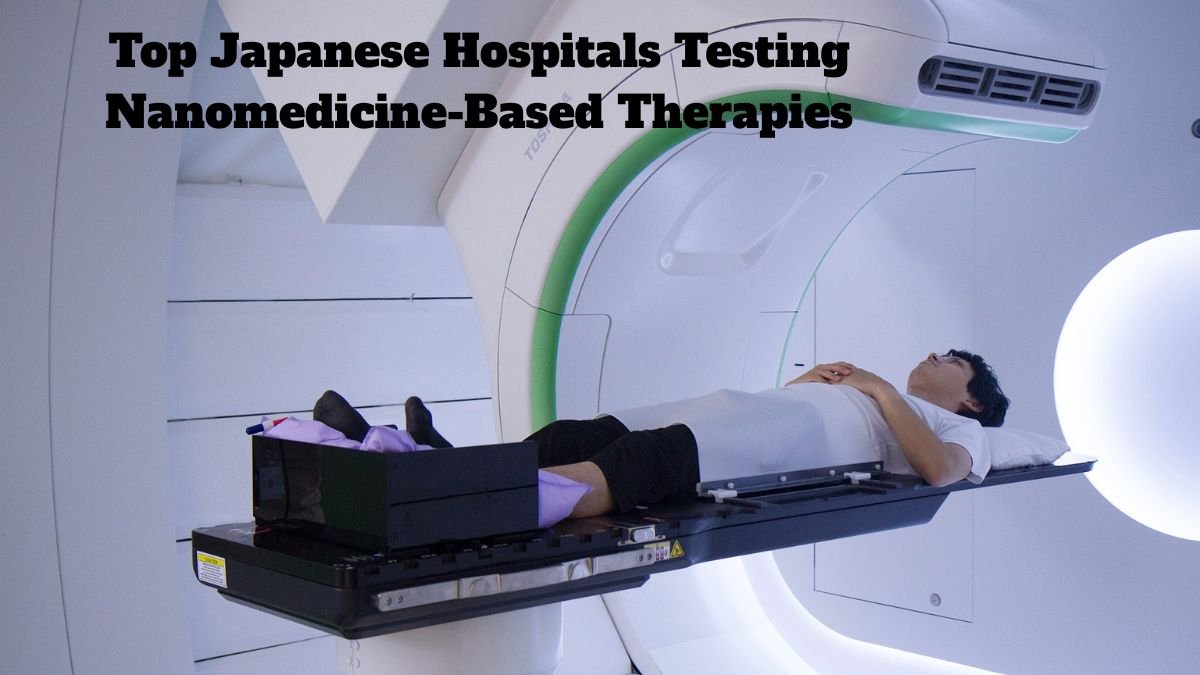While new discoveries are being made daily in modern medicine, Japan remains a global leader in scientific approaches and health research. Recently, top Japanese hospitals have begun testing nanomedicine-based therapies, which are considered a revolutionary step in the medical field. Nanomedicine, or nanotechnology-based medicine, uses tiny particles (nanoparticles) to deliver drugs or treatments to the body’s cells. This technology has brought new hope for the treatment of cancer, neurological disorders, infections, and many complex diseases.
What is nanomedicine and how does it work?
Nanomedicine is based on nanotechnology—a technology that uses tiny particles between 1 and 100 nanometers. These particles are designed to deliver drugs directly to specific areas of the body, such as tumors or infected cells. This increases the effectiveness of the drug and significantly reduces side effects.
Japanese scientists are developing nanoparticles that deliver drugs safely into the bloodstream and only affect diseased cells, leaving healthy cells unharmed. This is why nanomedicine is also called “smart medicine.”
The Beginning of Nanomedicine Research in Japan
Japan has already been a leading country in the field of science and technology. Research on nanomedicine began here nearly two decades ago, but has accelerated in recent years. Leading institutions such as Tokyo University Hospital, Kyoto Medical Center, and Osaka University Hospital are now conducting clinical trials on nanomedicine. These hospitals are testing nanotechnology-based treatments not only for cancer but also for neurological disorders and immune system-related diseases.
The Role of Nanomedicine in Cancer Treatment
Cancer is one of the world’s biggest health problems today. While traditional chemotherapy and radiation therapy affect the entire body, nanomedicine directly targets cancer cells. Hospitals in Japan are now developing nanoparticles that activate only on the surface of tumors and release drugs.
This technology offers patients the benefits of less pain, fewer side effects, and faster recovery. Initial trials have shown that patients treated with nanomedicines have experienced rapid reductions in tumor size and improved quality of life.
New Hope for Neurological Diseases
Japanese doctors are now using nanomedicines to treat complex diseases such as Alzheimer’s, Parkinson’s, and multiple sclerosis. Traditional drugs often fail to reach the brain because the blood-brain barrier blocks them. However, nanoparticles are so small that they can cross this barrier and deliver drugs directly to brain cells.
Ongoing trials at the National Center for Neurology and Psychiatry in Tokyo have shown that nanomedicine-based treatments have improved patients’ memory and neural response.
Steps Towards Precision and Personalized Treatment
The most significant characteristic of nanomedicine is its “precision.” This means it can be customized to each patient’s body and disease patterns. Japanese hospitals are designing nanoparticles by analyzing patients’ genetic profiles and biological data. This represents a major step towards “personalized medicine.”
In the future, this technology will enable every individual to receive treatment tailored to their body’s needs—the most modern and humane form of medicine.
Environmental and Safety Aspects of Nanomedicine
While nanomedicine offers hope in the medical world, scientists are also paying attention to its environmental and biological impacts. Japanese researchers are ensuring that nanoparticles do not persist in the body for long periods and do not harm the environment after being excreted.
To this end, biodegradable nanoparticles are being developed that deactivate and break down automatically after their intended use in the body, ensuring long-term safety.
Government and Industry Collaboration
The government, medical institutions, and industry are all working together to develop nanomedicine in Japan. The Japanese Ministry of Science has launched a national program called the “Nano Health Initiative,” under which several new drugs and devices are being developed.
Pharmaceutical companies such as Daiichi Sankyo, Takeda Pharmaceutical, and Astellas Pharma are also investing heavily in this field. These companies aim to have some nanomedicine-based drugs commercially available within the next five years.
International Collaboration and Future Prospects
Japan’s nanomedicine projects are not limited to the domestic level. American, German, and Indian research institutions are also working closely with Japanese scientists in this field. International collaboration is not only accelerating research but also expanding its reach globally.
In the future, it is expected that nanomedicine will become a major therapeutic option globally, especially for diseases previously considered intractable.
Potential Benefits for Patients and Society
The biggest benefits of nanomedicine will be to patients—less pain, fewer side effects, and faster results. Furthermore, treatment times in hospitals can also be reduced.
Conclusion
Nanomedicine is a turning point in the medical field, where science and humanity are coming together to create a new direction. These trials, being conducted by Japan’s top hospitals, are not only technologically significant, but they also serve as a testament to how sensitive, precise, and safe future medicine will be.
